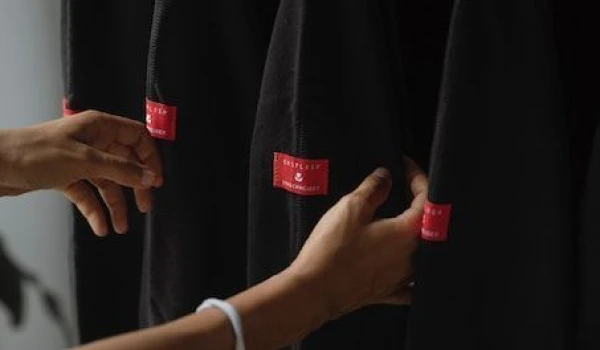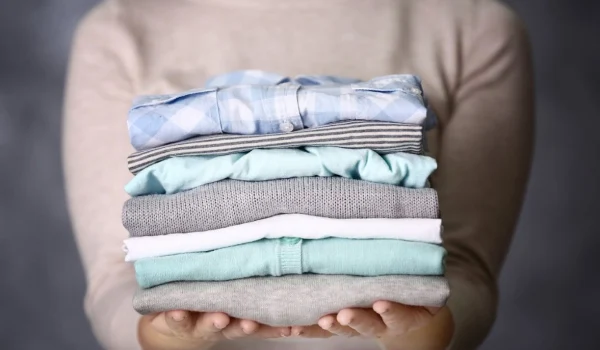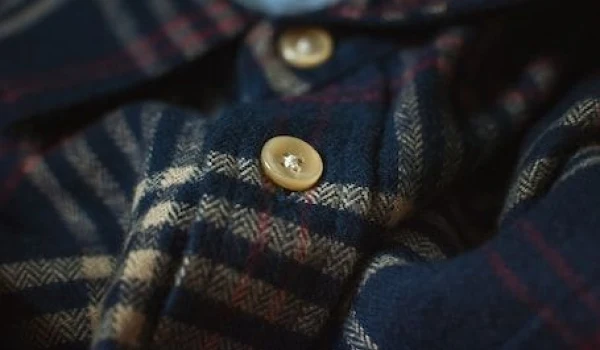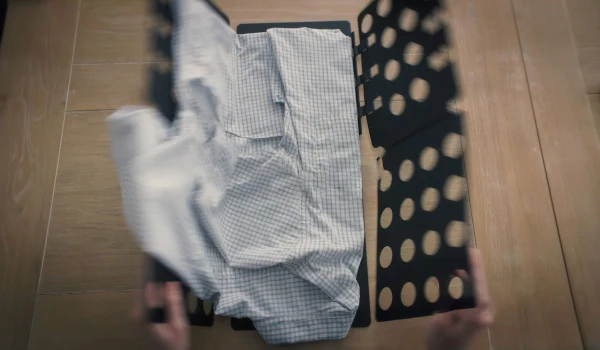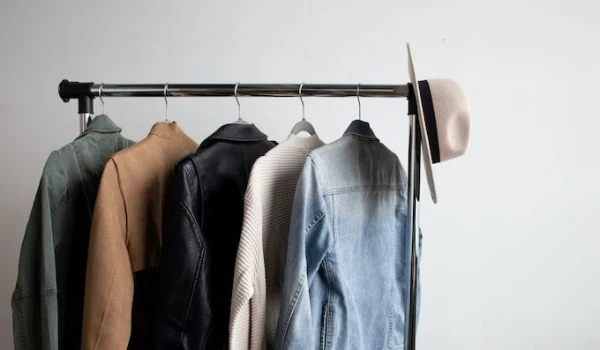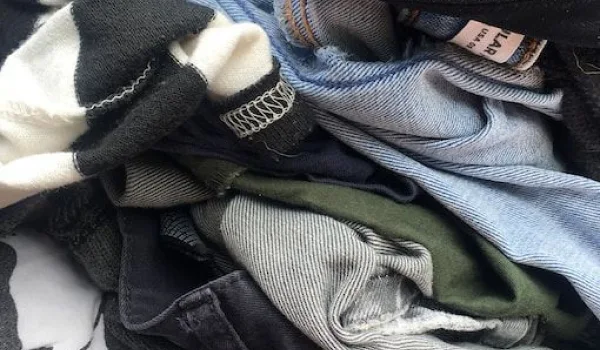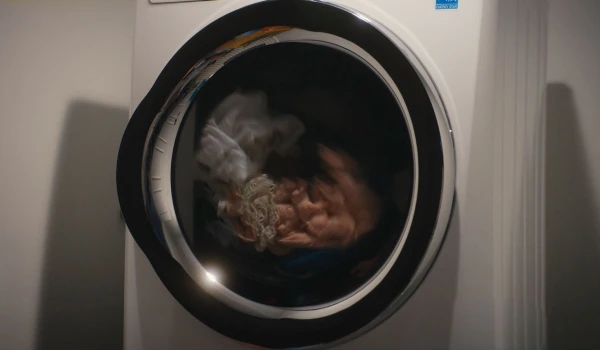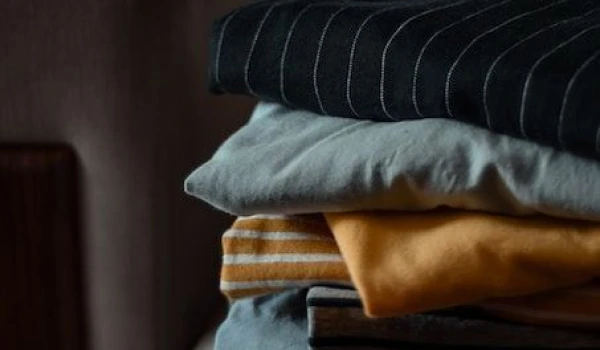Introduction
Whether your closet looks like you were just visited by Marie Kondo or a Dothraki Horde, we could all do with a couple home organization tips to keep our closet manageable and our clothes in optimal condition.
It’s okay, these organization tips will still be helpful long after the references above ;)
So read on! It’s time to clean up your closet and create a polished and personalized space that you can enjoy each time you get dressed.
Why Is Clothing Organization Important?
Sure, you might have a system you currently use or you "just know" where everything is, but what if there was a way to enhance your clothes storage organization game? Not only can it be more visually pleasing, but storing and hanging clothes can become a source of pride.
Here are some of the main benefits of utilizing efficient clothing storage techniques:
-
Efficient use of space: Make the most out of your storage space. Find additional capacity if you have limited spacing, or clear out clutter if you have abundant closet space.
-
Time savings: Your clothes will be accessible and easy to find. Avoid stress and spending time looking for your favorite sweater in the morning as you rush to get ready for your day.
-
Ideal outfit variety: You will naturally wear more of your clothes if you can see them. It is easy to forget about some garments that are out of sight.
-
Seasonal rotation: A well-organized wardrobe changes with the weather. Storing off-season garments separately, such as in cardboard boxes, storage containers, or vacuum-sealed bags is a great way to keep your space efficient.

7 Tips to Store Your Clothes Efficiently
Keep your daily essentials in the front row
You've heard the phrase "out of sight, out of mind" – while that usually applies to former flames, the same rule also works for closet organization.
Store your least-worn items at the back so you can dedicate prime closet real estate to your most beloved pieces. This will make getting dressed a lot more convenient, and you'll avoid the all-too-familiar situation of rummaging through the closet and ending up with a pile of discarded clothes on the floor or bed.
Style tip: Organize your go-to accessories, like a classic watch or simple jewelry, on a small tray next to your closet. Having them visible will encourage you to wear them and give you a more complete and polished look.
Think like a pro: know when to fold 'em
It might seem basic, but improper storage can cause a garment to lose its shape. Make sure you properly note which items to fold and which items to hang.
Clothes you should fold: Gently fold delicate items such as cashmere sweaters and heavy knits. For extra care, you can add a layer of acid-free tissue between garments.
Denim should also be folded, as hanging can cause it to stretch out in the wrong areas. Casual items such as T-shirts and tops can work both ways, based on personal preference.
Clothes you should hang: Keep your outerwear fresh by hanging them for storage. Your vintage leather jacket, silk blouse, or suit would appreciate the extra TLC.
Invest in some flocked hangers with velvet lining to keep your choice garments in mint condition. As always, any cocktail attire is best stored in a garment bag.
Out-of-season items don’t need prime real estate
Before putting anything in the closet at the end of each season, make sure your clothes are prepped for storage.
Launder items as needed, or send your clothes to a trusted dry cleaner for professional service – especially important for winter coats. This removes any scents or stains, as moths are attracted to undetectable smells.
Don't forget to clean your closet at least once per season (it can get dusty). It's also a good idea to go through and remove any items you don't wear regularly. Consider selling or donating the pieces that are in good condition – doing so will help keep your closet organized as well as help those in need.
Clean before storing
Spring may be on the way and you may no longer need your winter clothes, but make sure to wash or dry clean them before putting them away for the year. Remove dirt, stains, and odors so you have fresh garments ready for you next year.
Make labeling your best friend
There is no better feeling than finding what you're looking for right away when you're venturing into the basement, attic, or storage unit. To achieve this, organize your clothes by person, season, or type. Use labels on your plastic containers or wardrobe boxes and make storage a breeze.
The elements of style: invest in the right storage
The essentials: Storage bins are your best friend. Instead of unsightly plastic bins, consider linen storage organizers. Fabric organizers help your clothing stay fresh by allowing air to circulate. Try borrowing elements from Scandinavian decor, such as a set of wooden or copper hangers, to help your closet achieve a minimalist and uniform aesthetic.
The extras: Personalizing your space does not always require an involved process. Switching out little things can make a huge difference, such as adding some decorative items or art in or around your wardrobe. You can also paint or wallpaper the inside of your closet to inject a little more color and personal style.
Fill some sachets with dried lavender buds and place them in your closet to keep your clothes smelling great and repel any moths that might be creeping around your wardrobe – it's a pleasantly scented alternative to using mothballs.
Cedar chests are also a smart choice for woolens, as Red Cedar has natural oils that kill moth larvae (it's a good idea to first put the clothing in a resealable plastic bag for more protection).
The options: It may be useful to consider the pros and cons of different storage unit options:
Cardboard Boxes
-
Pros: Cheap, recyclable, and great for short-term storage
-
Cons: Prone to mold growth, absorbs smells and liquids, a magnet for bugs
Plastic Bags
-
Pros: Affordable, easy to transport
-
Cons: Prone to mildew growth via moisture accumulation, not great for long-term storage, disposal not environmentally friendly
Vacuum Bags
-
Pros: Great for seasonal clothing storage as bags become compact and save space
-
Cons: Prolonged compaction can damage clothing fibers, reducing its long-term effectiveness
Cotton Garment Bags
-
Pros: Breathable (preventing mold and mildew growth), great for long-term storage, keep dust out
-
Cons: Not very compact, not transparent (need labels!), more expensive
Plastic Storage Container
-
Pros: Sealable (no dust or bugs), easy to stack, good long-term solution that keeps your clothes protected
-
Cons: Can be expensive, can warp or crack, retains odors, not biodegradable or the most sustainable option
Be aware of moisture and climate conditions
Make sure the clothes are fully dry before storing them. Any residual dampness will result in mold or mildew growth – a terrible surprise the next time you look for these clothes.
In addition, consider the temperature of where you'll be storing your items. You do not need to invest in a climate-controlled storage unit but try to avoid keeping clothes in self-storage places, such as a garage. Humidity and temperature changes can damage the fibers – the best storage temperature is one that humans would enjoy too.

Here's What You're Doing Wrong in Terms of Storage
Here are a few common errors we see when it comes to clothing storage:
-
Using the wrong hangers: Hangers come in a wide range of sizes and materials. Too small and they cause wrinkles, too large and they form shoulder bubbles on your clothes. Ideally, use lightweight, non-slip felt hangers for delicates and wooden hangers for outerwear. Skip metal hangers.
-
Folding lingerie: There's a reason why they are called delicates. Do not fold bras and avoid storing other clothes on top of them to keep their shape and elasticity.
-
Stacking shirts instead of filing: Organizing experts state that clothes should not be stacked. Instead, they should be folded and stored vertically in rows, like a filing cabinet. This way, you can always see what is in your drawers and effectively use precious storage real estate.
-
Overstuffing containers and drawers: Not only is it hard to open and close these storage units, but this practice damages fabrics and makes it hard to find what you're looking for. Invest in other storage ideas (such as seasonal rotation) or consider reducing the amount of clothing you own.

Clean with Rinse Before Storing
While closet maintenance might seem like a chore, keeping these tips in mind will help you streamline the process and stay organized. One last tip is to consider using a professional laundry and dry cleaning service, such as Rinse, to clean your clothes before storing them.
We are experts in cleaning all types of garments and fabrics, ensuring that your clothes come back in pristine condition. We offer pickup and delivery, 7 days a week, and will handle washing, drying, folding, and ironing. Save time and effort by choosing Rinse for your clothes care before storing.
Contact us at Rinse today to see our skill in action.

Have laundry or dry cleaning to do?
Rinse picks up, cleans and delivers 7 days a week. Amazingly awesome. Ridiculously simple.


